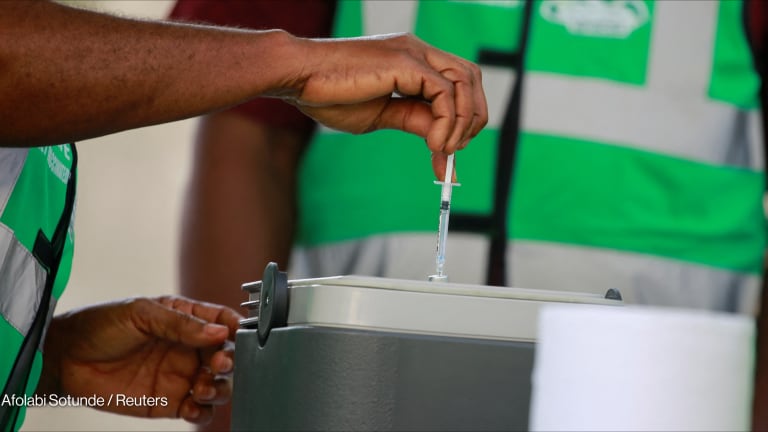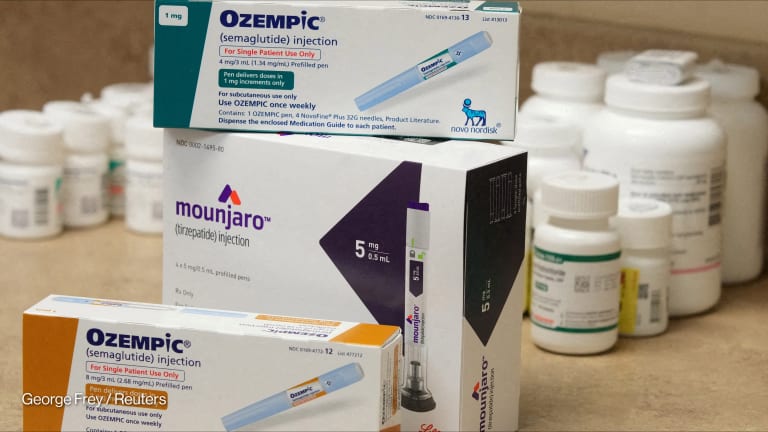
Last week the World Health Organization warned that four medicinal syrups manufactured in India are potentially linked with acute kidney injuries and deaths of 66 children in Gambia. In the coming weeks, a blame game will unfold among the multiple groups in the complex global system for medicines manufacturing, quality regulation, purchasing, and dispensing. Diffuse accountability among subnational, national, and global organizations will cloud our understanding of where the real fault lines lie.
Pharmaceutical supply chains are complex. Ingredient manufacturing, final formulation, packaging, and repackaging can be carried out in multiple countries. Medicines change hands many times between the manufacturer and the patient, making it hard for a single national regulatory agency to control the quality of medicines used in its country.
Well-resourced drug regulatory agencies in high-income countries have foreign outposts and significant staffing at their disposal, but resource-limited health systems do not. They rely on cooperation with their counterpart agencies around the world, especially from WHO.
For medicines for HIV, tuberculosis, malaria, women’s health, vaccines, and a few others, the WHO prequalification program curates a list of manufacturers with safe, efficacious, and high-quality products. Global procurement agencies and governments rely on these lists in their purchasing decisions. However, this program does not cover all essential medicines and certainly not the cough syrups linked to deaths in Gambia.
WHO also evaluates national regulatory systems using a standardized Global Benchmarking Tool that assesses a country’s regulatory authority at four levels of maturity, with 4 being the highest. The WHO GBT puts India’s national regulatory authority at Maturity Level 3 for vaccines meaning it is a stable, well-functioning, and integrated regulatory system.
“International spillovers in global pharmaceutical commerce mean that it is a global problem.”
—The maturity of India’s national regulatory agency on the WHO GBT perhaps gives Gambia some confidence in the quality of manufacturers in India. But this is where things get fuzzy.
While drug approval, product registration, and activities related to drug importation are carried out by India’s national drug regulatory authority, the licensing and inspections of manufacturing facilities falls to state-level agencies, whose stringency varies. The manufacturer of the syrups at issue in Gambia is licensed to export these drugs by the state regulatory agency but it is not licensed for manufacture and sale in India.
To help guarantee the quality of essential medicines and prevent a tragedy like what happened in Gambia from reoccurring, we propose three actionable ideas below.
1. Invest globally in improving national regulatory agencies
Much of the global financing for health goes to buying medicines and products for infectious diseases. With resources scarce, the case for the long-term benefits of investing in stronger national drug regulatory agencies appears to be weaker than, say, spending more on HIV drugs or mosquito nets. Only a small fraction of global health investments including World Bank loans and grants go toward building national regulatory capacity.
Some analysts argue that better regulation could be achieved by regional bodies or by expanding the scope of the WHO prequalification program, but this argument ignores the fact that medicine quality depends on activities along the entire product life cycle. Only well-resourced national regulatory agencies can inspect manufacturers, distributors, wholesalers, importers, exporters, and retailers. More quality problems arise from poor routine inspection of manufacturers and distributors than from poor safety and efficacy at the approval stage.
Gambia’s Medicines Control Agency, or MCA, is almost entirely unfunded. Would a more functional MCA have prevented the dispensing of substandard cough syrups and the deaths that followed? An MCA with strong analytical staff and technical resources would have detected that this manufacturer had received many violation notices from Indian state regulators in the past. It would have also been able to carry out the required tests more quickly and perhaps detect the kidney disease linkage to the use of this product even sooner.
2. Develop a global database of supplier quality noncompliance notices
Trust and transparency about the record of pharmaceutical manufacturers can help regulators and purchasers make more informed decisions.
Regulatory agencies inspect, audit, and lot-test pharmaceutical manufacturers within their jurisdiction or from outside their jurisdiction for import into their country. While inspection reports cannot be made public in many cases, noncompliance notices from a regulator to a manufacturer are public.
However, this information is fragmented and sits in public IT servers across countries and subnational bodies, making it difficult for public purchasing bodies and national regulators to access them. Information has now come to light that the manufacturer of the deadly syrups in Gambia had received multiple poor-quality notices from Indian state regulators over the last decade, but this information might not have been easily accessible to Gambia’s MCA.
It is unrealistic to assume that regulatory bodies or procurers will provide such data into a global system. However, by using advanced digital tools to quickly sift through public purchasing, legal, and regulatory records, a global agency could help build a list with the quality record of pharmaceutical manufacturers around the world.
The World Trade Organization and the International Chamber of Commerce are well suited to take on this role. To be clear, this would not be a quality certification system, but an information tool for regulators, purchasers, and other decision-makers in the pharmaceutical supply chain.
3. Reform India’s pharmaceutical regulatory structure
India is the world’s largest exporter of generic drugs, with many dozen high-quality generic manufacturers providing access to high-quality affordable medicines for patients around the world.
Yet the quality stringency of some Indian manufacturers falls short. India’s national drug regulatory agency has already taken steps to improve quality enforcement, but the presence of multiple regulatory authorities under different state governments fractures accountability, and vested interests of small, often lower-quality manufacturers inhibit stricter enforcement.
If India wants to maintain its position in the global generic pharmaceutical market, the national government and high-quality manufacturers must create a robust regulatory structure with a strong enforcement arm. And such efforts for quality enforcement should not be limited to exports to the United States and Europe or to sales to global procurers and/or United Nations agencies. They should be aimed at improving the quality of the overall pharmaceutical market.
The death of 66 children in Gambia is a tragedy, but it is also a wake-up call. A drug of poor quality circulating in one country is not merely the problem of the country where it was found or where it was manufactured. International spillovers in global pharmaceutical commerce mean that it is a global problem. It’s time to institutionalize concrete measures to guarantee the quality of essential medicines around the world. Global pharmaceutical regulation is complicated and there are hurdles to reform, but that’s no excuse for inaction.
Update, Oct. 19, 2022: This article has been updated to reflect that the Global Benchmarking Tool assesses a country’s regulatory authority at four levels of maturity, with 4 being the highest.








